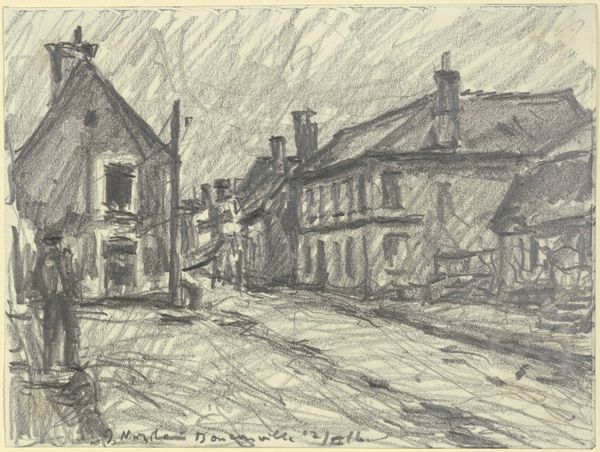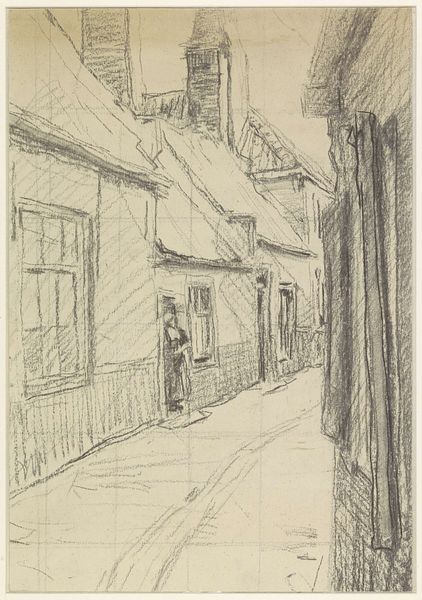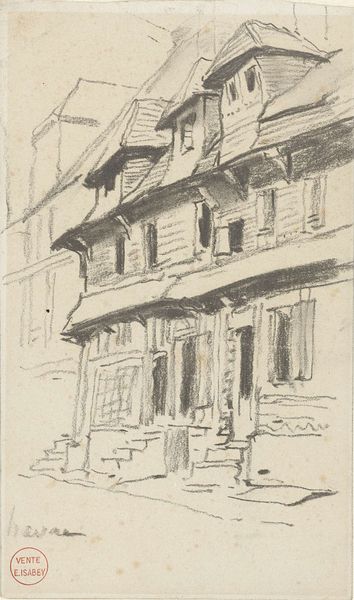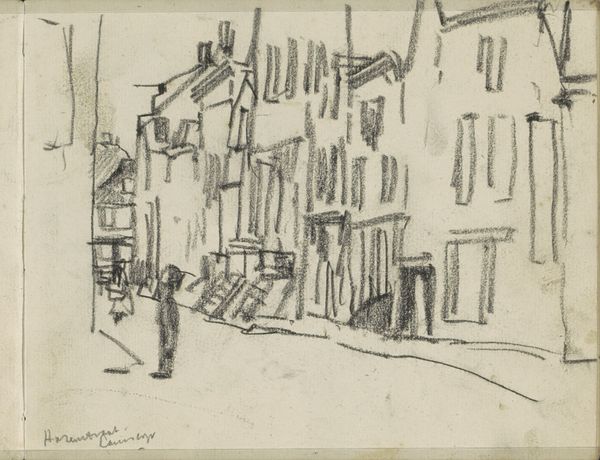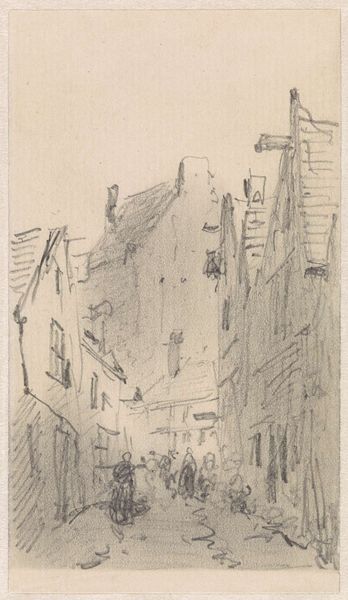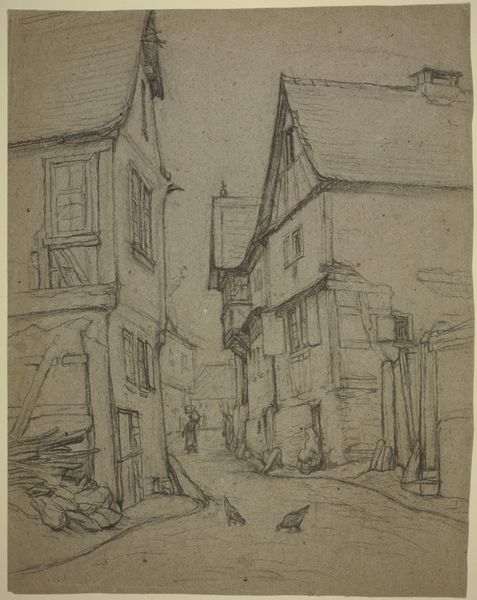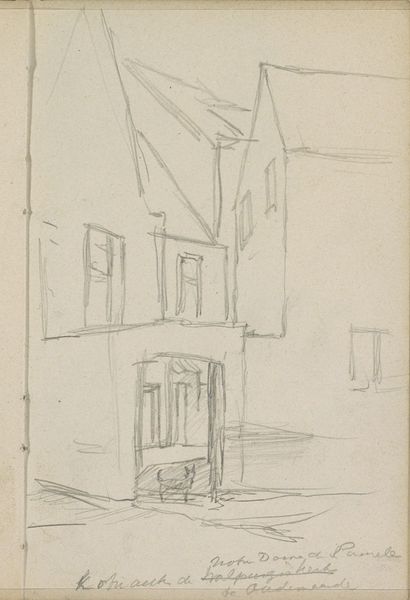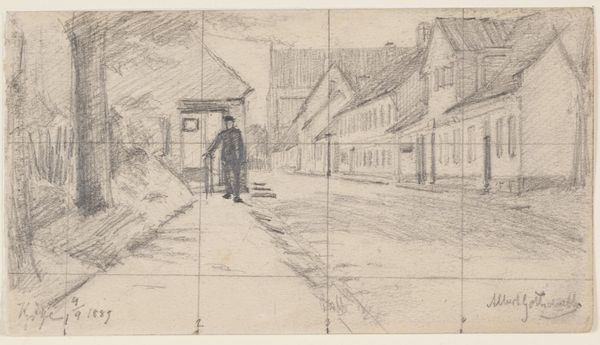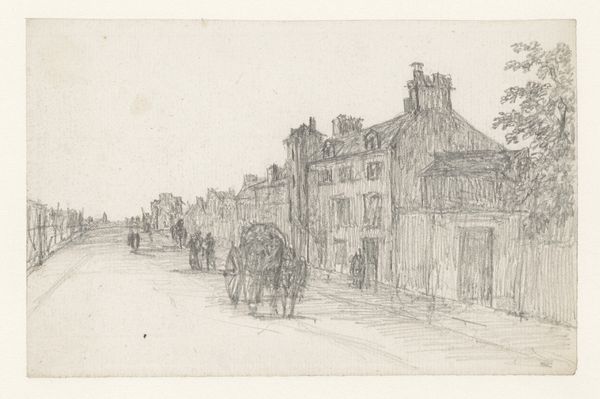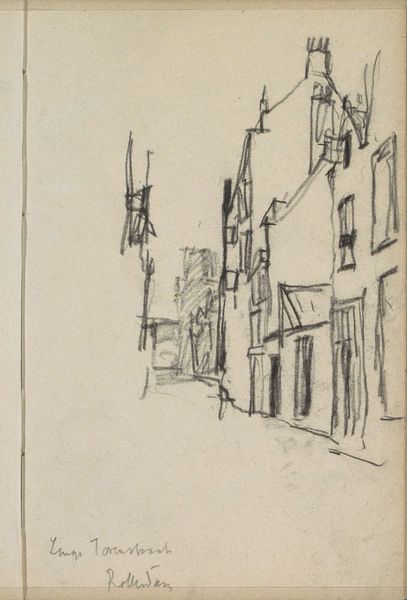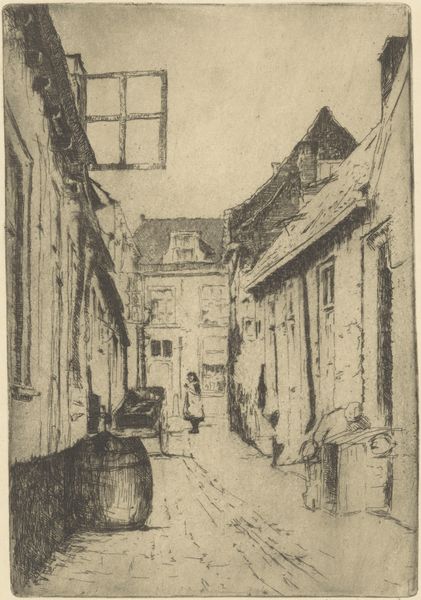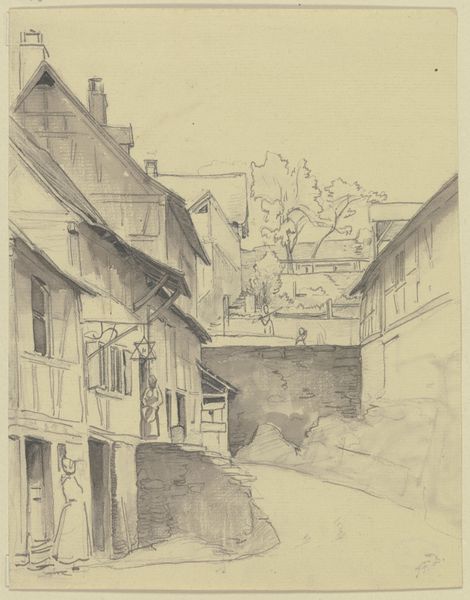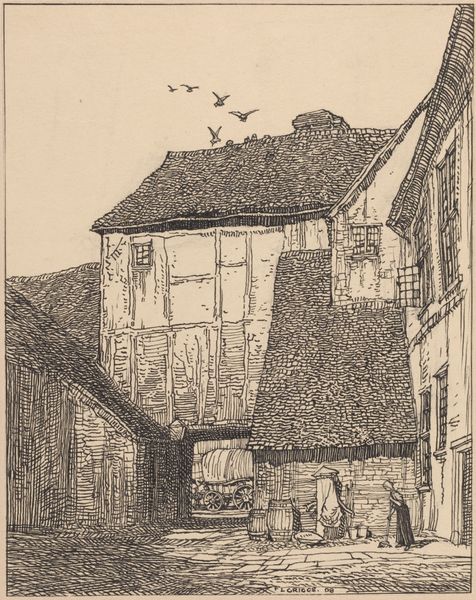
drawing, pencil
#
drawing
#
pencil sketch
#
landscape
#
pencil
#
cityscape
#
realism
Dimensions: 192 mm (height) x 111 mm (width) (bladmaal)
Editor: We’re looking at Albert Gottschalk's 1888 pencil drawing, "Liden i Helsingborg," housed here at the SMK. It’s a seemingly simple cityscape. I’m immediately drawn to how the perspective creates such a strong sense of depth, yet the sketch itself feels quite intimate and quiet. What strikes you most about it? Curator: The almost photographic realism is deceptive, wouldn't you agree? The steep angle evokes that of old postcards of the late 19th century. Beyond mere representation, the clustered houses almost seem like variations on the theme of "home," repeated, resonating like familiar stanzas. What does the repetition suggest to you about the communal experience of that time? Editor: That’s a great point, the homes *are* repetitive. Perhaps that signals a shared identity, or maybe a constraint? Did people define themselves more by their community back then, before individualism really took hold? Curator: Precisely! Consider how these identical buildings contrast with the variations that each household imprints—door color, window placement, even the arrangement of chimney pots become markers of unique habitation. These variations almost compete for the viewer’s gaze, wouldn’t you agree? Are those steps in the foreground suggesting an entrance or a path upwards? Editor: That makes sense. Those tiny differences humanize the sketch so much more! I love that contrast. What do you mean by path upwards? The steps don't lead anywhere in the drawing... Curator: In the drawing no. But does the implied path of an upward gaze, lead you, the viewer to imagine it could reach for the sky and something greater than the town? Editor: Ah! Right, as in progress! Very insightful! I never considered the possible symbolism of something like stairs. Curator: Art constantly engages us in these symbolic considerations and cultural projections, as our readings layer upon one another through time! A simple street corner becomes a text of habitation, social expectation, and personal expression.
Comments
No comments
Be the first to comment and join the conversation on the ultimate creative platform.
